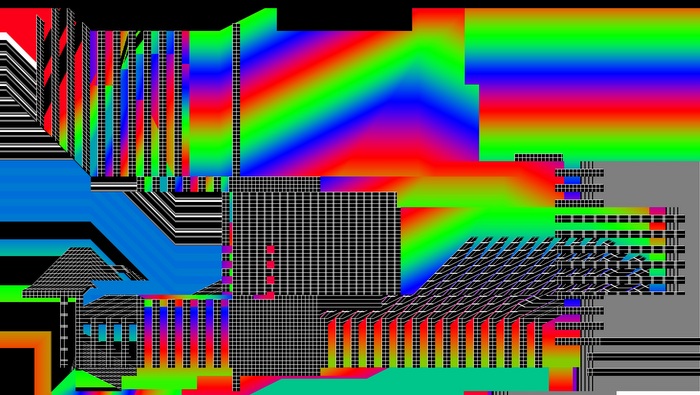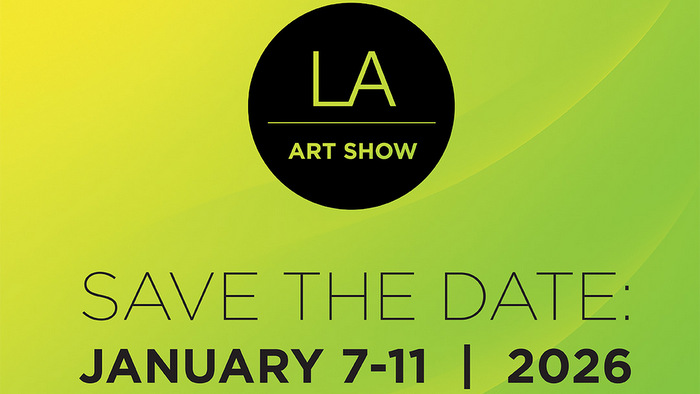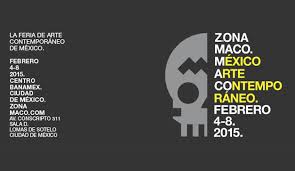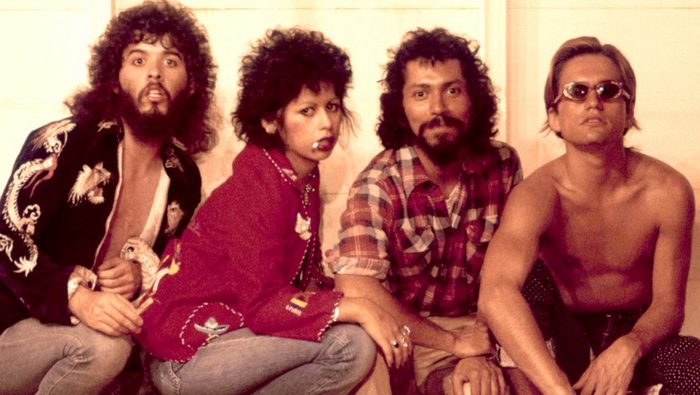 Zona Maco Sur
Zona Maco Sur
MEXICO City.- Predicting future starting from the past time. That is the premise of Zona Maco Sur, which in this occasion, it will work as an experiment on how the art scene could be in a couple of decades, starting from the predictions of its protagonists: the artists, the curators, the collectors, gallery owners and the viewers.
João Mourão (Portugal, 1975) and Luis Silva (Portugal, 1978) who are the guest curators for this section, they will invite the participants of the Zona Maco fair to predict the future starting from their own visualization by imagining themselves in the artistic panorama.
"The idea is to address the future as a political concept, thinking about the future as something that has no control and that it can only imagine, because the future is what we are, it is part of what we are," Silva explains in an interview and points out that thinking of the next thing make us to understand the past and present times.
It is in this sense that the performance starts from of the participants experiences and it is like a sensor of what is currently happening in the artistic production, the curator explains.
Predictions are not going in the direction of guessing when painting will gain space in galleries respect to the alternative media, Silva explains, but it has to do with the possibilities of thinking new strategies for social interaction, different ways of inhabiting the world and, at the same time, means for linking to the art.
"I think that our main commitment, since it is just an experiment, is that we do not know how it will be, what result will be, but we expect the project and the context existing help to show the potential of the future and we can think about a different world, different manners of being, the creator added. "
The exhibition of 22 projects of 11 countries such as Argentina, Brazil, Colombia, Portugal, Germany, Spain and Great Britain will be added to this action. The list of galleries includes Blackston, De Buck Gallery and Marc Straus, in New York; Patrick Heide and Hidde Van Seggelen ,in London; Pilar, in São Paulo, and Vu Gallery, in Lima.
The invitation is opened and the curators have selected those projects that share the futurist view and that, in some cases, is applied to social or personal issues, and others with more conceptual language.
"Any way, all these artists show their speculation on the world and there is a kind of practice for speculation. We will see that they directly speculate on the project or speculate about some knowledge related to the social commitment."
A common factor, he points out, is that most of the artists are young, so for Silva is something natural considering that the new generations are looking for new ways to understand and develop.
"We are interested in projects that have common elements related to the idea of speculation, because we are trying to say that speculation about the future is something very important to improve it", he concludes.
 Design
Design
With the premise that the collecting of design objects is left behind compared to the contemporary art, curator Cecilia León de la Barra invited more than 30 artists galleries and collectives for the design area with aim of showing a series of objects specifically produced for the fair.
So, the Pavilion will showcase from pieces made of wood, jewelry, ceramics and textile coinciding in its useful status, since according to the curator, the design has the advantage of offering a tangible use besides being decorative objects.
“Collecting in design is something new if compared with the art, but it also has future. Galleries with an specific interest have been already emerged, although it seems to me that there is not enough spreading. We must open a space to promote the work, which can be useful to hang on the wall or just being used for your every day life like the porcelain plates of old houses ", said Cecilia who reviewed the project including more than 50 galleries and designs.
In the fourth edition of this Pavilion are involved mainly projects of the Mexico city such as the DNA Gallery, Ánfora, Center of German design, Ezequiel Farca, Carla Fernández, Pirwi and Studioroca; in addition to Casa Gutiérrez Nájera of Querétaro and Guanajuato, and the IAGO Gallery of Oaxaca.
From abroad, Downtown of Paris, Other Criteria of London, Odabashian of Miami, and Fitzgerald of New York are included.
That is showing useful and unique objects were the factors for selecting projects, in order to offer the viewer collection pieces in the sense more plain of the term, and, at the same time, that they may be useful objects; for example, the vintage furniture or a series of objects by Demian Hirst out of the concept of art.
"In the previous edition I was interested in clarifying that the design was not art, and tried to people understand that the design might not be seen as contemporary art. We focused on collection production since the people are interested in it but they are not convinced, that is why the idea of presenting limited editions of objects.”
 New proposals
New proposals
As a window to the emerging production, the new proposals section will offer 23 Mexican and international galleries, each one with the work of three "not settled" young artists who together draw up a map of the most recent art, even without having exhibited their work before at any institution. With curatorship by Pablo del Val, the artists and galleries were selected from their innovative proposals and that the creators were young people and with a short professional career. In addition, they gave priority to artists living and working in Latin America or, even, they addressed topics related to the region through this region.
The list of participants include the Galleries Paula Alonso of Madrid; Blackston of New York; Duve of Berlin; Patrick Heide of London, Proyectos Ultravioleta of Guatemala; Wu Gallery of Lima, Yam of San Miguel de Allende and Muno of Zacatecas, among others.
This space will also display a selection of international galleries with individual projects of artists under 35 years of age, who also agree on the technological means to produce the work.
The Pablo del Val’s search is that the Pavilion makes a call to curators and collectors on the artists who may become the mainstream in the next decade; give space to those starting in the art market, which simultaneously allows to do a review of what's new on the scene.
So, it will be from photography and painting to objects and installations developing issues mainly about the current condition of Latin America,.
Modern art
The border between modernity and contemporary in art has led to discussions in the last decade, and although the time factor and the means of production setting out certain differences are questioned to what extent converge both moments of aesthetic.
In an attempt to contribute to elements for the analysis, the modern art section offers an overview of artists and projects corresponding to the contemporary from their formats, languages, and the date they were generated; in such a way that it intends to draw not only the differences between the modern and the contemporary, but its connections.
Under curatorship by Mauricio Marcin, the Pavilion will take 14 galleries of six countries from Venezuela and United States, to England, United Kingdom and Spain, whose artists were born before 1945.
"The majority of what you will see in the section has to do with painting and sculpture, and certainly, there are works which are on the border, and can be installation or work in relief. The modern art section may be also understood as the precedent for the repository of what is displayed in the main section, and I think positive to see contemporary art with the other foot at the previous stop, in the artistic modernity," Marcin explains.
They will offer work by José Clemente Orozco, Diego Rivera, David Alfaro Siqueiros; likewise artists of abstract expressionism such as Vicente Rojo, Alberto Gironella, Manuel Felguérez and Gunther Gerzso; and even parts of the surrealists refugees in Mexico like Leonora Carrington, Remedios Varo and Bridget Tichenor.
The curator pointed out a series of 130 photographs taken by André Breton and Manuel Alvarez Bravo in 1930 that documents one of the Breton travels to Mexico; They will be presented at the GE Gallery of Monterrey. It will be also exhibited Cayon, a space of Madrid; KM fine Arts of Miami; Iñigo Philibrick of London and works by Enrique Guerrero and Paul Goebel of Mexico.
Marcin added that in conceptual terms, modernity and contemporary are distinguished from their epistemological approaches, which means that while modern artists saw the art from their utopian condition to improve the environment, the next generation breaks that illusion.
In addition, the supports and digital media modified how to make and understand art: "certainly the contemporary is influenced by new media, the technological means that have changed the production, and now is subjected to technological advances", said the curator the curator who seeks to bring works of Latin America to the market as well as the different modes of understanding Latin American modernism.
The section will be complemented with some conferences that will reflect on the concepts that modernity bequeathed to the present; with the title Terreno de duda (Estudios de caso desde la contemporaneidad) (studies from a contemporary perspective) will participate historians and curators like Rodrigo Quijano (Lima, 1970), Annabela Tournon (Paris, 1981), and David Miranda (city of Mexico, 1977, among others
Source: Excelsior
Related Publications

Zero 10 at Art Basel Miami Beach: A New Space for the Digital Era of Art
December 03, 2025













